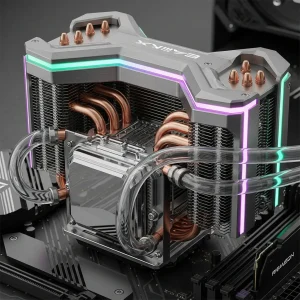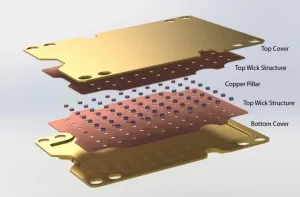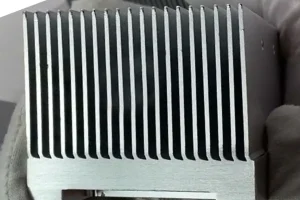How to Choose the Most Suitable Liquid Cooling Piping Material to Meet Efficient Heat Dissipation Needs
As data center power consumption and cooling demands grow exponentially, liquid cooling technology has evolved from a niche solution to a core configuration for high-compute scenarios. Liquid-cooled servers leverage the high thermal conductivity of liquid mediums to overcome the cooling density limitations of traditional air cooling. The internal piping system, acting as the “vascular network” for heat transfer, directly determines cooling efficiency and system reliability.
This paper will analyze the technical spectrum and selection logic of liquid cooling pipelines from the dual perspectives of materials science and engineering applications.
01 Two Physical Forms of Liquid Cooling Technology
Liquid-cooled servers have developed two main technical approaches based on their heat transfer methods: cold plate liquid cooling and immersion liquid cooling. These two approaches have fundamental differences in their piping system designs.
1> Cold Plate Liquid Cooling
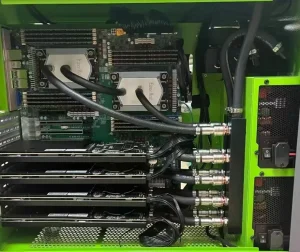
This method uses deionized water or an ethylene glycol solution as the heat transfer medium. Heat is dissipated through conduction as the metal cold plates make direct contact with the CPUs and GPUs. The piping system needs to form a branch network inside the server, delivering the cooling liquid from a manifold to each cold plate. Typical flow rates are 5-10 L/min, with operating pressures usually below 1 MPa. The main advantage of this approach is its strong compatibility with existing server architectures, and the pipe layout is similar to traditional water-cooling systems.
2> Immersion Liquid Cooling
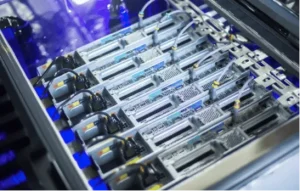
This method involves immersing the entire server in dielectric cooling liquids like fluorinated fluids. It achieves highly efficient heat dissipation by absorbing latent heat during the liquid’s boiling phase change, with a heat transfer coefficient that can reach 50,000 W/m²K. The piping system for this solution primarily handles cooling liquid circulation and filtration. Since the dielectric medium doesn’t react electrochemically with metals, the corrosion resistance requirements for the piping material are relatively lower. However, it needs to exhibit low permeability and resistance to high-temperature vapor.
02 Technical Spectrum and Engineering Performance of Piping Materials
Liquid cooling pipes can be broadly categorized into two families based on their material: flexible hoses and rigid metal pipes. Different materials show significant variations in temperature resistance, chemical compatibility, and mechanical properties.
Flexible Hose Family: Balancing Flexibility and Cost
1> EPDM (Ethylene Propylene Diene Monomer) Rubber Hoses
EPDM hoses, made from an ethylene-propylene-diene copolymer, are a preferred choice for mid-to-low-end liquid cooling applications due to their cost advantage. Their minimum bending radius is only twice the pipe diameter, allowing for flexible routing in the confined spaces of servers. Installation doesn’t require special tools, and connections can be made by hand. However, this material accelerates aging above 120°C, posing a risk of cracking with long-term use. It also has poor compatibility with oil-based coolants, which can cause swelling and deformation upon contact. While EPDM hoses offer outstanding cost-effectiveness in laboratory test platforms or low-cost prototype systems, their 3-5 year lifespan can become a maintenance challenge in long-lifecycle projects such as AI supercomputing.
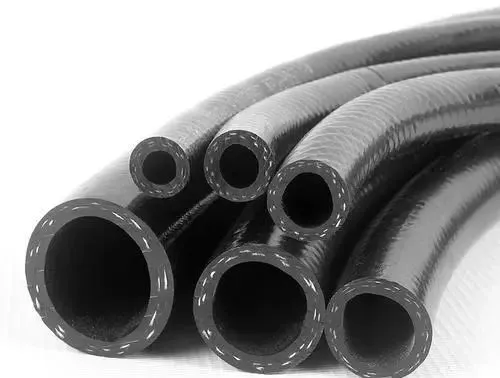
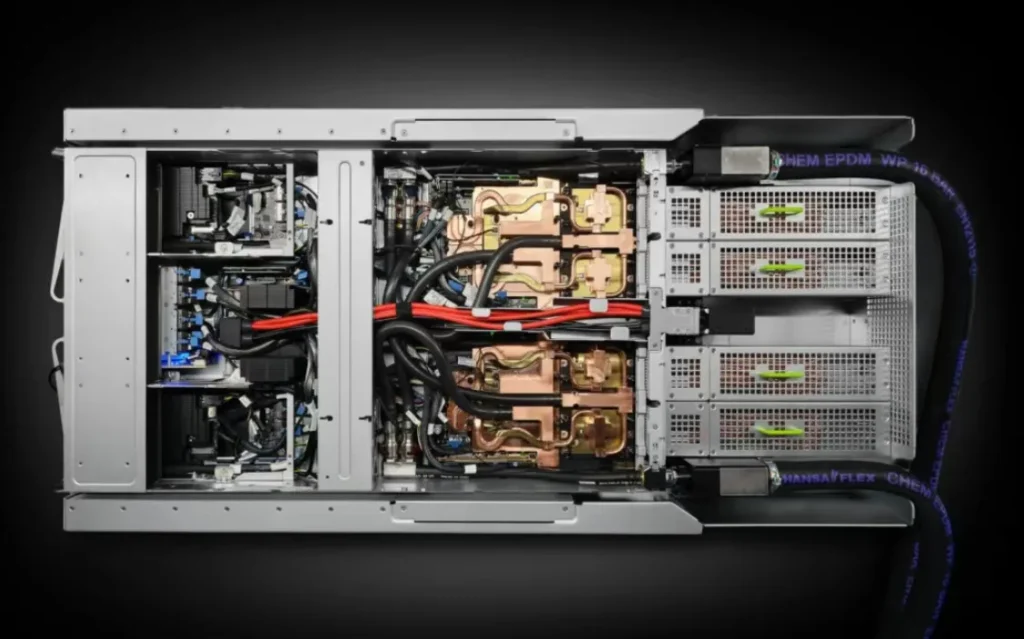
2> FEP (Fluorinated Ethylene Propylene) Corrugated Tubing
Often called “transparent Teflon,” FEP tubing offers unique advantages in chemical resistance and visibility. With over 92% light transmittance, engineers can directly observe bubbles and impurities within the tube, which is crucial for high-purity cooling circuits like those in medical equipment. This material boasts a wide temperature range of -80°C to 200°C and is compatible with 99% of industrial coolants. Its helium leak rate is remarkably low, at 1×10⁻¹⁰ Pa·m³/s, which is three orders of magnitude lower than rubber hoses. However, FEP tubing has limited flexibility; its minimum bending radius needs to be at least five times the tube diameter. This can pose a challenge when routing in compact server cabinets, and its noticeable thermal expansion and contraction require users to account for compensation space during installation.
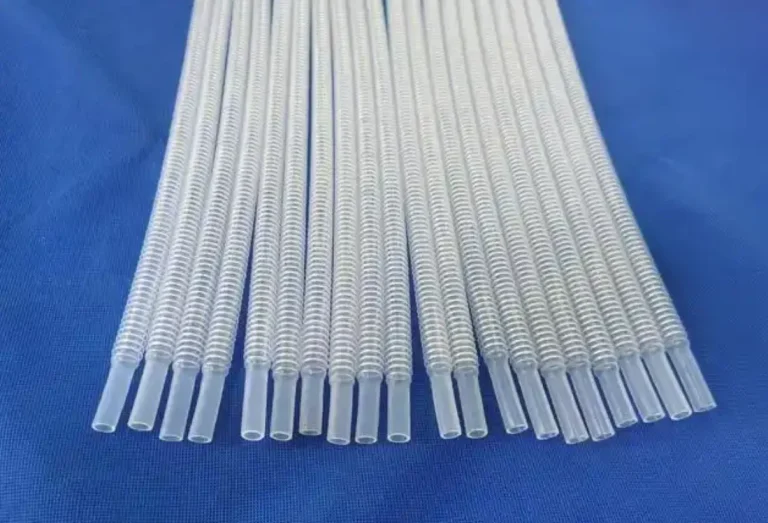
3> PTFE (Polytetrafluoroethylene) Liquid Cooling Tubes
Often referred to as the “King of Plastics,” PTFE (Polytetrafluoroethylene) hoses offer irreplaceable performance under extreme conditions. Their temperature resistance extends from -200°C to 260°C, with short-term tolerance up to 300°C. The helium leak rate is remarkably low, at ≤5×10⁻¹² Pa·m³/s, approaching zero permeability.
In semiconductor etching fluid circulation systems, PTFE hoses can withstand the strong corrosive effects of hydrofluoric acid. In nuclear power plant cooling systems, their radiation resistance ensures long-term stable operation.
However, this material is extremely rigid, requiring a bending radius of eight times the tube diameter. It’s also challenging to process, needing specialized flaring tools and hot-melt welding equipment, which drives connection costs to 2-3 times that of ordinary pipe materials. This limits its application in low-cost scenarios.
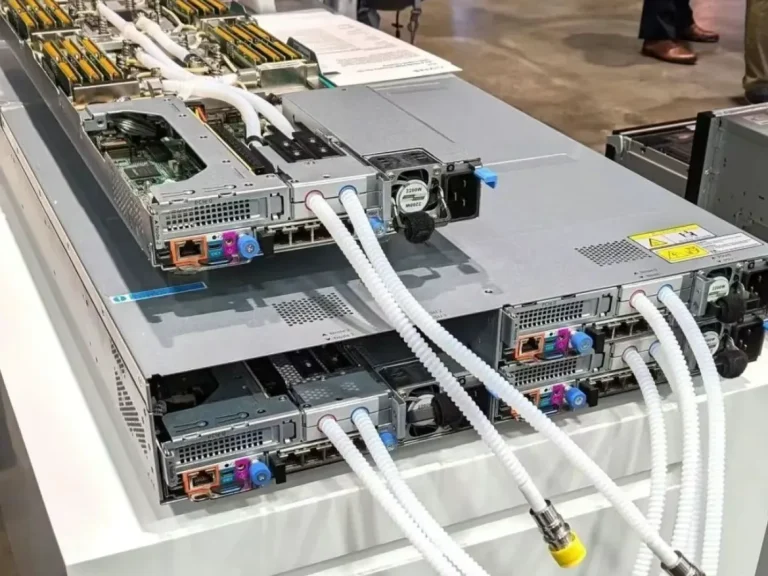
4> 316L Stainless Steel Corrugated Metal Hoses
In the realm of high-power liquid-cooled servers, 316L stainless steel corrugated hoses have become standard for high-end models like the NVIDIA GB300. This tubing boasts a burst pressure of ≥25 MPa and can withstand high flow impacts of 200 L/min. In AI supercomputing clusters, it effectively reduces the risk of fatigue caused by vibrations in rigid pipes.
The 316L material offers over 20 years of pitting corrosion resistance in environments containing 500 ppm chloride ions, and it demonstrates excellent compatibility with common coolants like ethylene glycol aqueous solutions and fluorinated fluids.
However, its weight per unit length is 2.5 times that of PTFE tubing, limiting its use in weight-sensitive applications such as automotive systems. Additionally, without insulation, there’s a risk of electrical conductivity, requiring the installation of extra insulating sleeves.
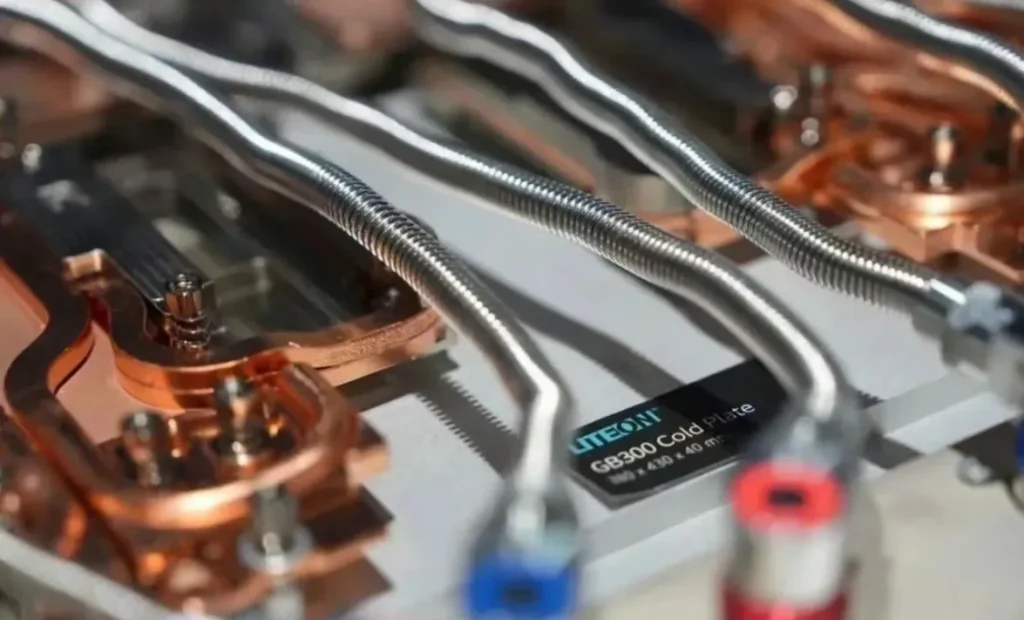
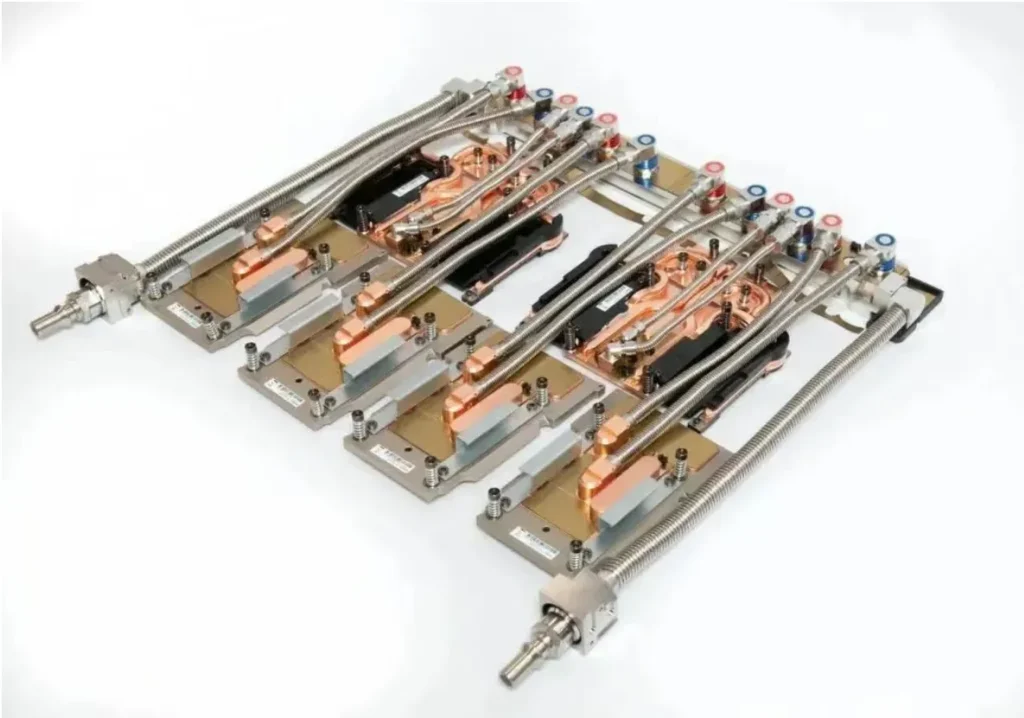
Multi-Dimensional Performance Comparison and Selection Matrix
To assist engineers in making precise selections, the following comparison system has been established, focusing on key performance indicators and coolant compatibility:
Performance Indicators: Horizontal Comparison
| Performance Dimension | EPDM Hose | FEP Bellows | PTFE Hose | 316L Stainless Steel Bellows |
|---|---|---|---|---|
| Temperature Range | -40℃ to 150℃ | -200℃ to 200℃ | -200℃ to 260℃ | -200℃ to 600℃ |
| Bending Flexibility | Excellent (R≥2D) | Moderate (R≥5D) | Stiff (R≥8D) | Bendable yet rigid (R≥5D) |
| Cost Index | 1.0 (Baseline) | 3.5 | 5.0 | 4.0 |
| Service Life | 5-10 years | >10 years | >10 years | >15 years |
| Installation Complexity | Simple | Moderate | High | High |
| Permeability Rate | Moderate | Very Low | Very Low | Very Low |
Coolant - Tubing Compatibility Guide
| Coolant Type | Recommended Tubing Materials | Incompatible Materials |
|---|---|---|
| Deionized Water | EPDM, 316 Stainless Steel | Carbon steel (prone to rust) |
| 50% Ethylene Glycol Aqueous Solution | PTFE-lined hose, 316 Stainless Steel | Copper, Aluminum (galvanic corrosion risk) |
| Synthetic Oil (e.g., PAO) | Fluororubber hose, PEEK tubing | EPDM (swelling failure risk) |
| Fluorinated Liquid | Perfluoroelastomer (FFKM) seals | Standard silicone rubber (permeation risk) |
03 Three-Dimensional Decision Model for Engineering Selection
In practical applications, the selection of liquid cooling pipes requires comprehensive consideration of the following key factors:
1> Thermal Management Requirements
For high-power density scenarios (e.g., single cabinet power > 50kW), PTFE or stainless steel corrugated pipes should be prioritized due to their temperature resistance and anti-permeation properties, ensuring long-term stable operation. Conversely, EPDM hoses can be used to reduce costs in low-power consumption test platforms.
2> Installation Space Constraints
When server internal cabling space is limited, the flexibility of EPDM hoses offers a clear advantage. However, for scenarios requiring visual monitoring, transparent FEP corrugated tubing is more suitable.
3> Lifecycle Cost
For long-term operational projects like data centers, even though stainless steel corrugated pipes have a higher initial cost, their lifespan of over 15 years can significantly reduce maintenance expenses. For short-term projects, EPDM hoses can be used to control the budget.
As AI computing demands drive liquid cooling technology towards advancements like supercritical CO₂ cooling and multi-phase flow heat dissipation, piping materials are also evolving towards high temperature resistance, low permeability, and lightweight properties. In the future, composite pipe materials combining the chemical inertness of PTFE with the strength of metal may become a breakthrough for next-generation liquid cooling systems. Furthermore, the application of 3D printing technology in forming complex piping will also bring new possibilities for liquid cooling system design.

